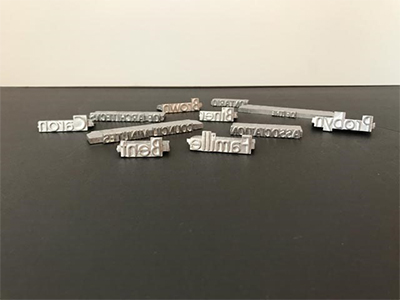
Unlock Personalization Excellence with Ludlow Stamping for Your Hardback Books
In the dynamic world of bookbinding and finishing, the ability to personalize hardback books has taken center stage. Imagine having the names of personnel in various sizes, typefaces, and colors adorning your books—truly a bespoke touch. At our binding and finishing company, we bring a unique perspective to personalization, especially through a process called “Ludlow” stamping, a technique that has stood the test of time for over 150 years.
The Ludlow Stamping Advantage: When it comes to personalization, the Ludlow stamping technique offers unparalleled flexibility and precision. We can personalize hardback books with up to 3000 different names, each varying in size, font, and color. The Ludlow machine, a testament to craftsmanship, creates lead type for individual names like John Doe, ensuring a distinctive and elegant appearance on the book cover.
Seamless Foil Stamping: In our commitment to providing high-quality and cost-effective personalization options, we’ve seamlessly integrated Ludlow stamping into our processes. Unlike traditional methods that involve debossing or embossing impressions on the book cover, Ludlow stamping employs foil to create a sleek and refined appearance. This not only enhances the visual appeal but also allows us to offer a remarkable 80% cost savings on a per-unit basis for foil stamping on a run of 3000 names.
Quality Beyond Tradition: While Ludlow stamping is a 150-year-old process, our implementation ensures that the quality surpasses traditional standards. The precision and attention to detail in Ludlow stamping make each personalized name stand out with clarity and finesse. The result is a level of quality that not only pays homage to the rich history of Ludlow stamping but also meets the demands of modern aesthetics.
Cost-Effective Personalization: Choosing Ludlow stamping for personalized, individual names on the front of your hardback book not only ensures top-notch quality but also provides a cost-effective solution. The substantial reduction in per-unit pricing for a run of 3000 names makes Ludlow stamping an attractive choice for publishers and authors seeking both excellence and efficiency.
How to Get Started: If you’re intrigued by the prospect of having personalized, individual names stamped on the front of your hardback books, we invite you to give us a call. Our dedicated team is ready to discuss your specific requirements and showcase the capabilities of Ludlow stamping. Additionally, feel free to email us for a sample, allowing you to experience firsthand the elegance and uniqueness that Ludlow stamping brings to personalized book covers.
Elevate the personalization of your hardback books with Ludlow stamping, a time-honored technique that seamlessly blends tradition with modern efficiency. Experience the unmatched quality, flexibility, and cost-effectiveness of Ludlow stamping by reaching out to us today. Transform your hardback books into personalized masterpieces that leave a lasting impression on readers and make your literary works truly stand out.
What is Embossing? Embossing is the process of using male and female etched dies (typically made of magnesium, brass or copper) and heat to raise or push letters or a design above the surface of a sheet of paper; it creates an eye-catching three-dimensional effect. The embossing die is made with a reversed image of the design. When this process creates an indented image, it is known as debossing. Computer controlled milling machines or hand sculpted engraving are used to convert the graphic image to the metal embossing die. A good example of embossing that many of us have seen (and felt) is a notarized document. Embossed printing pieces can be used without ink or foil (known as blind embossing), or with ink or foil such as gold, silver or many other colours, adding another distinctive and visually appealing element to the embossed piece.
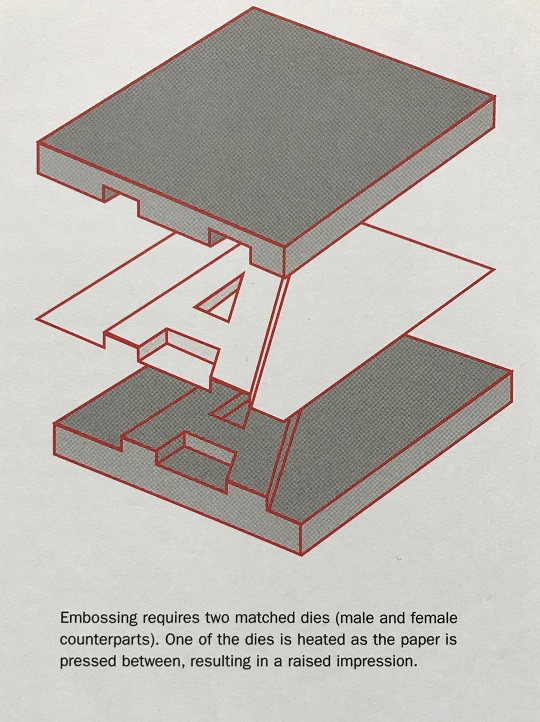
Embossing is a technique that’s perfect for adding a touch of class and individuality to your printed piece:
- Business cards
- Letterhead and envelopes
- Presentation folders
- Rack cards
- Brochures
- Invitations
- Certificates
- Greeting cards
Many elements and images in your design can be embossed, including text. Embossed pieces use a detailed die and heavier paper stock to highlight the depth and detail of the embossed graphics or images. Aslo, with the addition of coloured metallic foil stamping, the emboss really stands out, both literally and visually. It is a great way to draw out and highlight important details, such as names, designs, or logos.
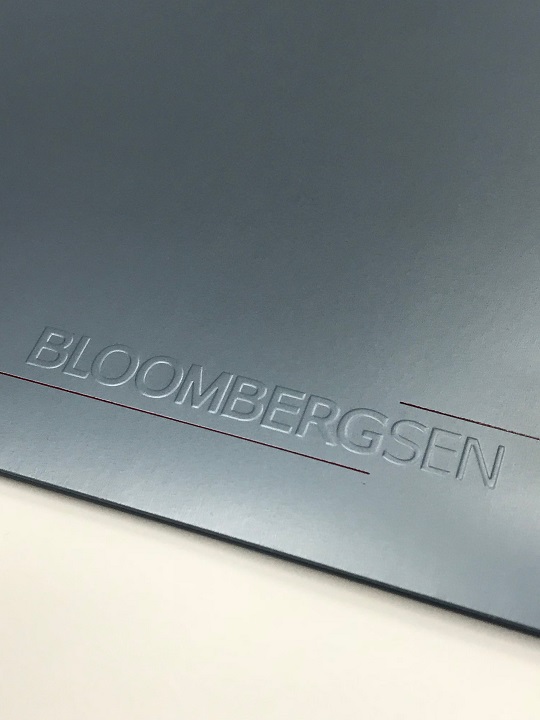
Embossing is an elegant way to add a unique look and feel to your marketing piece. Considering how many pieces of mail, business cards and other printed materials your target audience gets each day and at every tradeshow and convention, this special touch can make all the difference in your piece getting noticed. Embossed business card can make a lasting impression.
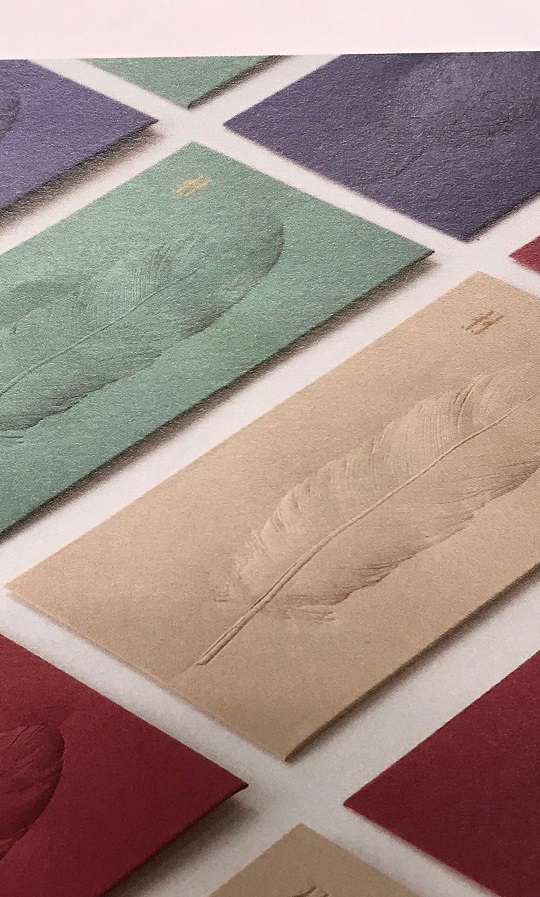
Embossing uses a specially made die under high pressure to form a raised three-dimensional impression that allows you to literally feel the design. If an impression is molded so that it is lower than the paper’s surface, it is called a deboss.
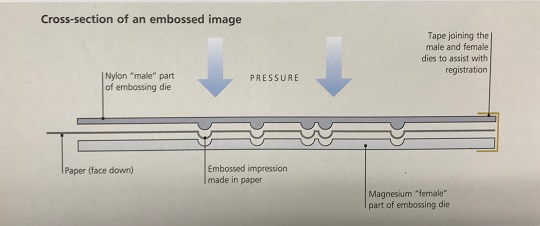
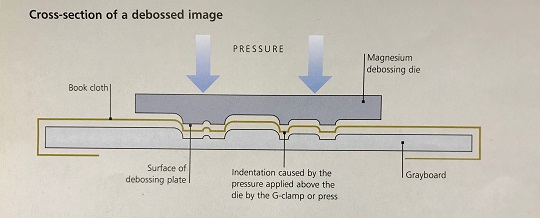
TIPS FOR REDUCING PROBLEMS IN THE BINDERY
Always design spreads with crossovers in mind
Letters that cross over from page to page will get cut off and not line up, images with specific detail will suffer the same fate. Some printers are better than others, but the onus is on us as designers to make it look its best.
